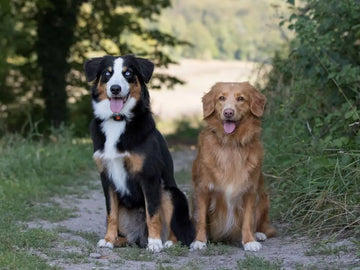It’s important to first identify the type of toys your dog uses. Common dog toy materials include rubber, plastic, fabric, and plush, each requiring a different cleaning method. Here’s a breakdown of how to safely clean the various types of dog toys.
1. Rubber and Plastic Toys
Rubber and plastic toys are durable, often used for chewing and tugging. They are more resistant to wear and tear but can accumulate bacteria, dirt, and saliva over time.
-
Handwashing Method:
For rubber and plastic toys, soak them in warm soapy water for 10-15 minutes. Use a soft scrub brush or toothbrush to get into crevices and remove any stuck debris. Be sure to use a mild, pet-safe soap to avoid introducing any harmful chemicals. -
Dishwasher Option:
Many hard rubber or plastic toys are dishwasher-safe, making cleaning even easier. Place the toys on the top rack of the dishwasher, running a cycle with no detergent or using a pet-safe soap. The high heat of the dishwasher helps to sanitize the toys, killing bacteria and removing grime.
2. Fabric and Plush Toys
Fabric and plush toys, like stuffed animals, are favorites for many dogs but can trap dirt, saliva, and even small pests over time. These toys require regular cleaning to prevent mold or bacteria growth.
-
Machine Washing:
Most plush toys can be thrown into the washing machine. Use cold water and a gentle cycle, opting for a pet-safe laundry detergent. It’s a good idea to place the toys in a mesh laundry bag to protect them during the wash cycle. Air dry or tumble dry on low heat. -
Handwashing Plush Toys:
If you prefer not to use a machine, handwashing is a great alternative. Soak the plush toys in warm water with a mild detergent, gently scrubbing any stained or dirty areas. Rinse thoroughly to remove all soap residue, then allow the toys to air dry completely.
3. Rope Toys
Rope toys are often overlooked when it comes to cleaning, but these can harbor bacteria deep within the fibers. The good news is that they can be sanitized easily.
-
Boiling Method:
To effectively clean a rope toy, you can boil it in water for a few minutes. This will help kill bacteria and loosen dirt trapped in the fibers. After boiling, allow the toy to cool and air dry. -
Microwave Option:
Another trick for sanitizing rope toys is to soak them in water and then microwave them on high for a minute. The heat will kill bacteria, while the water prevents the toy from burning. Just be sure to remove any metal parts before microwaving!
4. Squeaky Toys
Squeaky toys are usually made of rubber, plastic, or plush materials, but the squeaker inside adds a layer of complexity to cleaning. You want to avoid damaging the squeaker while ensuring the toy is clean.
-
Handwash for Squeaky Toys:
It’s generally safer to handwash squeaky toys to avoid water seeping into the squeaker mechanism. Wash these toys in warm, soapy water, giving them a good scrub with a toothbrush if necessary. Avoid submerging the entire toy if you can. Rinse thoroughly and let the toy air dry completely before giving it back to your dog.
Pet-Safe Cleaners for Dog Toys
When cleaning your dog’s toys, it’s essential to use pet-safe cleaners. Many household cleaning products contain chemicals that can be harmful to pets. Here are a few safe options:
-
Vinegar Solution:
A 1:1 mixture of vinegar and water is an excellent natural cleaning solution for dog toys. Vinegar helps to cut through grime and is non-toxic to pets. Use this solution for handwashing or in the laundry for plush toys. -
Baking Soda:
Baking soda is another safe cleaning agent that can be used to deodorize dog toys. Mix a small amount with water to form a paste, applying it to tough stains or particularly dirty toys. Rinse thoroughly after scrubbing. -
Dish Soap:
Choose a mild, pet-safe dish soap for washing rubber, plastic, or fabric toys. Always ensure the soap is fully rinsed off before returning the toy to your dog.
How Often Should You Wash Dog Toys?
The frequency of cleaning depends on how often your dog plays with their toys and the environment in which they’re used. As a general rule:
- Wash rubber or plastic toys at least once a week.
- Clean plush or fabric toys every couple of weeks or when visibly dirty.
- Sanitize rope toys after every couple of play sessions, especially if your dog loves tug-of-war.
Toys that are taken outside, used in the yard, or shared with other dogs should be cleaned more frequently.
Replacing Worn-Out Toys
While regular cleaning can extend the life of your dog’s toys, it’s crucial to know when to retire them. If a toy is falling apart, has missing pieces, or shows signs of excessive wear, it’s best to replace it. Broken toys can be a choking hazard or contain sharp parts that could harm your dog.
Conclusion
Washing your dog’s toys is an important aspect of keeping them healthy and happy. By regularly cleaning their toys, you help reduce bacteria buildup, eliminate germs, and keep playtime enjoyable. Always use pet-safe cleaning methods and products, and be mindful of when it’s time to replace worn-out toys. With a little bit of care and attention, your dog’s favorite toys can last a long time, keeping them safe and your home hygienic.











